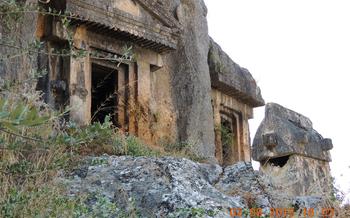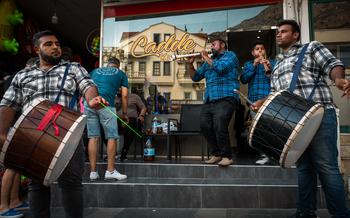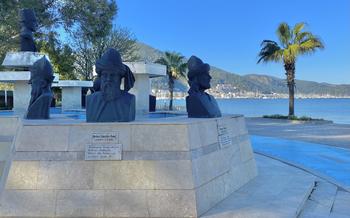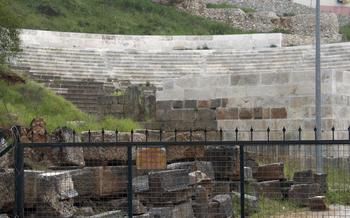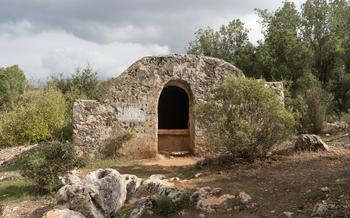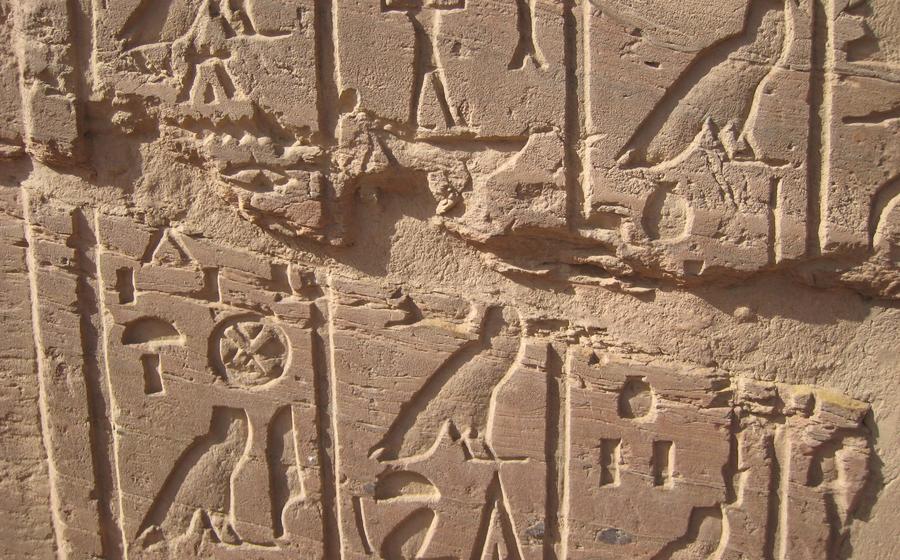
Kas Lions Tomb
- Kaş Lions Tomb
- History and Origins
- Architectural Style
- Carvings and Reliefs
- Location and Access
- Legends and Myths
- Excavations and Discoveries
- Comparison with Other Tombs
- Symbolism and Motifs
- Craftsmanship and Artistry
- Deterioration and Preservation
- Lycian Way Trekking Route
- Cultural Significance
- Visitor Tips and Etiquette
- Insider Tip: Unveiling a Hidden Gem
Kaş Lions Tomb
The Kaş Lions Tomb, an iconic landmark of the ancient Lycian civilization, stands as a testament to the rich history and cultural heritage of Turkey. Located on a hillside overlooking the picturesque town of Kaş, this impressive tomb captivates visitors with its intricate carvings, historical significance, and breathtaking views.
The tomb's most striking feature is its facade, adorned with two majestic lion sculptures that symbolize strength, protection, and guardianship. These life-size lions, carved with exquisite detail, flank the entrance to the tomb, creating a sense of awe and reverence. The tomb's design is a unique blend of Lycian and Hellenistic influences, showcasing the region's diverse cultural heritage.
History and Origins
The Kaş Lions Tomb is a testament to the ingenuity and artistry of the ancient Lycian civilization. Constructed during the 4th century BC, its precise date of origin remains uncertain. The tomb initially served as a monumental burial chamber for prominent Lycian individuals, likely rulers or high-ranking members of society.
The Lycians were known for their advanced culture, which blended elements of Greek, Persian, and Anatolian influences. They possessed a unique written language and practiced a form of ancestor worship, with elaborate tombs serving as houses for the deceased in the afterlife.
The identity of those interred within the Kaş Lions Tomb remains shrouded in mystery. While no definitive inscriptions or artifacts have been found to provide names or specific details, the tomb's grandeur suggests that it was reserved for individuals of great importance in Lycian society.
Excavations conducted at the site have unearthed various artifacts and inscriptions that shed light on Lycian burial practices and rituals. These discoveries have contributed to our understanding of the Lycian worldview and their beliefs regarding the afterlife.
Architectural Style
The Kaş Lions Tomb stands out for its unique architectural style and intricate carvings. The tomb's facade is carved directly into the rock face, creating a monumental and imposing presence. The most striking feature of the tomb is the pair of majestic lions that flank the entrance. These lions are depicted in a seated position, with their heads turned towards the viewer, symbolizing their role as guardians of the tomb.
The tomb's facade is further adorned with a variety of other carvings, including human figures, mythical creatures, and floral motifs. These carvings are executed with great skill and artistry, showcasing the remarkable craftsmanship of the ancient Lycian artisans. The symbolism and motifs employed in the reliefs are believed to hold cultural and religious significance, providing valuable insights into Lycian beliefs and funerary practices.
When compared to other Lycian tombs, the Kaş Lions Tomb exhibits a number of unique features. Firstly, the tomb's facade is carved directly into the rock, rather than being constructed from separate blocks of stone. This technique, known as rock-cut architecture, is a hallmark of Lycian funerary art. Secondly, the tomb's reliefs are particularly well-preserved and detailed, showcasing the exceptional craftsmanship of the Lycian artisans.
Carvings and Reliefs
The Kaş Lions Tomb is renowned for its intricate carvings and reliefs that adorn its facade. The most prominent feature is the depiction of two majestic lions, standing guard at the entrance as if protecting the tomb's secrets. These lions are meticulously carved, showcasing the skill and artistry of the ancient Lycian craftsmen. Their fierce expressions and muscular bodies exude a sense of strength and power, befitting their role as guardians of the afterlife.
In addition to the lions, the tomb is adorned with a variety of other figures and motifs. Human figures, possibly representing mourners or deities, are depicted in various poses, adding a narrative element to the reliefs. Floral motifs, such as rosettes and garlands, symbolize life and rebirth, while geometric patterns provide a harmonious backdrop to the intricate carvings.
The symbolism and significance of these carvings extend beyond their aesthetic value. The lions, for example, represent strength, courage, and protection, while the human figures may represent the deceased or their loved ones. The floral motifs symbolize the cycle of life and death, while the geometric patterns represent order and harmony in the universe.
The carvings on the Kaş Lions Tomb provide a glimpse into the rich symbolism and beliefs of the ancient Lycians. They are a testament to the skill and artistry of their craftsmen and continue to captivate visitors with their intricate beauty and profound cultural significance.
Location and Access
The Kaş Lions Tomb is situated on a hillside overlooking the town of Kaş, offering breathtaking views of the town, the coastline, and the Mediterranean Sea. Its strategic location makes it a prominent landmark and a popular tourist attraction. The tomb is easily accessible by road, with a well-maintained asphalt road leading to its doorstep. For those who prefer a more adventurous approach, the tomb can also be reached via hiking trails that meander through the scenic Lycian countryside. These trails offer an opportunity to explore the region's natural beauty and discover other hidden gems along the way.
Whether arriving by road or on foot, visitors will be rewarded with stunning vistas of the tomb's imposing facade and the panoramic views that stretch out before them. The tomb's location on the hillside provides a unique perspective, allowing visitors to appreciate its grandeur and architectural details from various angles.
Legends and Myths
The Kaş Lions Tomb has inspired a wealth of local folklore and stories over the centuries. One popular legend tells of a fierce lion that once roamed the mountains, terrorizing the local villagers. A brave warrior named Kas slayed the lion and buried it on the hillside, where the tomb now stands. The two stone lions guarding the entrance are said to be representations of the slain beast, symbolizing its power and ferocity.
Another legend speaks of a hidden treasure buried beneath the tomb. According to the tale, a wealthy Lycian king stashed his vast riches in a secret chamber within the tomb, guarded by the watchful lions. Many have attempted to find the treasure, but none have succeeded, as the lions are said to fiercely protect the king's wealth.
These legends add an air of mystery and intrigue to the Kaş Lions Tomb, captivating visitors with their tales of bravery, hidden treasures, and supernatural guardians.
Excavations and Discoveries
Archaeological excavations conducted in the area surrounding the Kaş Lions Tomb have yielded valuable insights into Lycian burial practices and rituals. Unearthed artifacts, such as pottery, jewelry, and inscriptions, provide clues about the lives and beliefs of the ancient Lycians. These discoveries have helped scholars reconstruct the funerary customs and traditions of this fascinating civilization.
The excavations also revealed structural features and modifications made to the tomb over time. Additional chambers and niches were uncovered, suggesting the tomb's use as a family mausoleum or for multiple burials. Ongoing research and preservation efforts continue to shed light on the history and significance of the Kaş Lions Tomb, contributing to our understanding of Lycian culture and funerary practices.
Comparison with Other Tombs
The Kaş Lions Tomb is a unique and remarkable example of Lycian funerary architecture, but it is not the only one of its kind. Other Lycian tombs, scattered throughout the region, share similarities in design and features, yet each one possesses its own distinct characteristics.
One of the most striking similarities between the Kaş Lions Tomb and other Lycian tombs is the use of rock-cut facades and intricate carvings. The Tomb of Amyntas, located near Fethiye, is another notable example of this style. Its facade is adorned with a frieze depicting various scenes from Greek mythology, including the story of Amyntas and his wife.
Another common feature among Lycian tombs is the presence of lion sculptures. The Tomb of the Nereids, located in Xanthos, is a particularly impressive example, with four majestic lions guarding the entrance. These lions are remarkably similar to those found at the Kaş Lions Tomb, both in their size and their fierce expressions.
However, despite these similarities, the Kaş Lions Tomb stands out for its unique features. The tomb's location on a hillside overlooking the town and coastline is unparalleled, offering visitors breathtaking views of the surrounding landscape. Additionally, the tomb's carvings are particularly well-preserved, providing valuable insights into Lycian art and symbolism.
By comparing the Kaş Lions Tomb with other Lycian tombs, we can gain a deeper understanding of the diversity and significance of this ancient civilization's funerary practices. Each tomb offers its own unique perspective on Lycian culture and history, making them all worthy of exploration and appreciation.
Symbolism and Motifs
The intricate carvings and reliefs adorning the Kaş Lions Tomb hold a wealth of symbolic meaning, deeply rooted in Lycian mythology and beliefs. The lion, a prominent motif, is a powerful symbol of strength, courage, and protection. Depicted with fierce expressions and muscular bodies, the lions are believed to guard the tomb and its occupants, warding off evil spirits and ensuring a peaceful afterlife.
Other motifs found on the tomb include rosettes, garlands, and floral patterns. These elements symbolize life, fertility, and the cycle of death and rebirth. The combination of these motifs creates a rich tapestry of symbolism, reflecting the Lycian belief in the afterlife and the importance of honoring the dead.
The lion's position atop the tomb further emphasizes its significance as a guardian. By placing the lions at the highest point, the Lycians were symbolically elevating them to a position of power and authority, ensuring that they would remain vigilant protectors of the tomb and its occupants for eternity.
Craftsmanship and Artistry
The Kaş Lions Tomb stands as a testament to the exceptional craftsmanship and artistry of the ancient Lycian craftsmen. Their skill and precision are evident in every detail of the intricate carvings adorning the tomb's facade. The reliefs depict lions, guardians, and other figures with remarkable realism and attention to anatomical detail. The craftsmen skillfully used the natural contours of the rock to enhance the depth and dimension of their creations.
The techniques employed in carving the reliefs demonstrate the advanced level of craftsmanship possessed by the Lycians. They used a combination of chisels, hammers, and other tools to shape the rock into lifelike figures. The resulting carvings showcase a mastery of form and proportion, capturing the essence and majesty of the subjects they depict.
The artistic style of the Kaş Lions Tomb reveals influences from various cultures and civilizations that interacted with the Lycians. Elements of Greek, Persian, and Anatolian art can be discerned in the motifs and iconography depicted on the tomb. This blending of styles reflects the cosmopolitan nature of Lycian society and their openness to external influences.
Despite the passage of time and exposure to the elements, the craftsmanship and artistry of the Kaş Lions Tomb have endured remarkably well. The tomb's reliefs retain much of their original detail and grandeur, allowing visitors to appreciate the skill and artistry of the ancient Lycian craftsmen.
Deterioration and Preservation
Like many ancient monuments, the Kaş Lions Tomb has faced the relentless effects of time and the elements. Weathering, erosion, and human activity have taken their toll on the intricate carvings and reliefs. The harsh Mediterranean climate, with its intense sunlight, strong winds, and occasional storms, has contributed to the deterioration of the tomb's exterior. Additionally, human activities such as graffiti and vandalism have further damaged the site.
Recognizing the importance of preserving this cultural treasure, authorities and organizations have undertaken conservation efforts to protect the tomb from further damage. Restoration and maintenance projects have been implemented to address the effects of weathering and erosion. Specialized techniques and materials are employed to repair damaged areas and stabilize the structure.
Efforts are also made to raise awareness among visitors and the local community about the significance of the tomb and the importance of preserving it for future generations. Educational programs and signage help to promote responsible tourism and encourage visitors to respect and protect the site.
The ongoing conservation and preservation efforts aim to ensure that the Kaş Lions Tomb continues to stand as a testament to the artistry and cultural heritage of the ancient Lycians.
Lycian Way Trekking Route
The Kaş Lions Tomb is a prominent landmark along the renowned Lycian Way trekking route, a 540-kilometer trail that winds through the stunning landscapes and historical sites of Turkey's Mediterranean coast. The tomb serves as a highlight of the route, attracting hikers and history enthusiasts alike.
As you embark on the Lycian Way, you'll encounter a diverse array of natural wonders, from lush forests and sparkling turquoise waters to rugged mountains and hidden coves. The trail offers a unique opportunity to immerse yourself in the region's rich history and culture, as you pass by ancient ruins, traditional villages, and breathtaking vistas.
Along the way, you'll discover a treasure trove of historical sites and cultural landmarks, including ancient cities, Byzantine churches, and medieval castles. The Lycian Way is not just a hiking trail but a journey through time, allowing you to connect with the past and appreciate the region's diverse heritage.
The Kaş Lions Tomb stands as a testament to the enduring legacy of the Lycian civilization. As you approach the tomb, you'll be awestruck by its impressive facade and intricate carvings, a testament to the skill and artistry of the ancient Lycians. Take a moment to admire the grandeur of the tomb and reflect on the lives and stories of those who once inhabited this land.
Whether you're an experienced hiker or simply seeking an unforgettable adventure, the Lycian Way offers an unparalleled opportunity to explore the natural beauty and cultural heritage of Turkey. The Kaş Lions Tomb is just one of the many highlights that await you along this epic journey. Embrace the spirit of exploration and discover the hidden treasures of the Lycian Way.
Cultural Significance
The Kaş Lions Tomb stands as a testament to the rich history and culture of the ancient Lycian civilization. It serves as a reminder of the ingenuity, artistry, and beliefs of these ancient people. Preserving and promoting the tomb's cultural heritage is paramount, as it provides valuable insights into the Lycian way of life and contributes to the region's cultural identity.
The tomb's unique design, intricate carvings, and historical significance make it a popular tourist destination. Its inclusion in the Lycian Way trekking route further enhances its cultural significance, attracting hikers and history enthusiasts from around the world. By visiting and appreciating the tomb, visitors not only witness its architectural beauty but also gain a glimpse into the past, fostering a deeper understanding of the Lycian culture and its enduring legacy.
Promoting the tomb through cultural events, exhibitions, and educational programs can further raise awareness of its importance. Local communities and organizations play a crucial role in preserving and showcasing the tomb's cultural heritage, ensuring its significance is passed on to future generations. The Kaş Lions Tomb serves as a symbol of cultural pride and identity, reminding us of the enduring power of history and the importance of preserving our cultural treasures for the enrichment of humanity.
Visitor Tips and Etiquette
When visiting the Kaş Lions Tomb, it is essential to observe proper etiquette and respect the cultural significance of the site. Here are some tips for visitors:
-
Respectful Behavior and Dress Code: As the tomb is a historical and cultural landmark, visitors should dress modestly and behave respectfully. Avoid loud noises, disruptive behavior, and any actions that may disturb the tranquility of the site.
-
Avoid Touching or Climbing: The tomb is an ancient structure that has stood for centuries and should be treated with care. Visitors should refrain from touching or climbing on the tomb, as this can cause damage to the carvings and contribute to the deterioration of the site.
-
Use Designated Trails and Pathways: To prevent erosion and preserve the natural surroundings, visitors should stick to designated trails and pathways. These trails are designed to minimize impact on the environment and provide a safe and enjoyable experience for all.
-
Photography Guidelines and Restrictions: Photography is permitted at the Kaş Lions Tomb, but visitors should be mindful of other visitors and avoid using flash photography, which can be disruptive and disrespectful. Tripods and other photography equipment may be restricted in certain areas to protect the tomb and its surroundings.
Insider Tip: Unveiling a Hidden Gem
For an unforgettable experience, venture beyond the main tourist paths and discover a hidden gem that offers a unique perspective of the Kaş Lions Tomb. A short walk from the tomb, you'll find a secluded viewpoint that unveils a breathtaking panorama of the ancient monument.
This hidden viewpoint allows you to appreciate the tomb's grandeur from a distance, surrounded by the picturesque landscape of Kaş. Capture stunning photographs that encapsulate the tomb's majesty amidst the natural beauty of the region.
The secluded nature of this viewpoint ensures a tranquil ambiance, free from the crowds that may gather at the tomb itself. It's the perfect spot to immerse yourself in the history and serenity of this ancient site.
Whether you're an avid photographer, a history buff, or simply seeking a unique and awe-inspiring experience, this hidden viewpoint is a must-visit for anyone exploring the wonders of the Kaş Lions Tomb.
